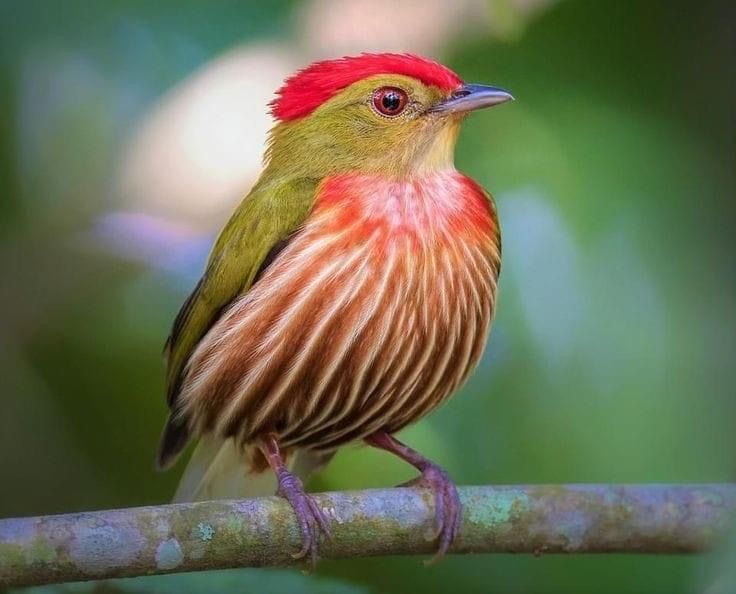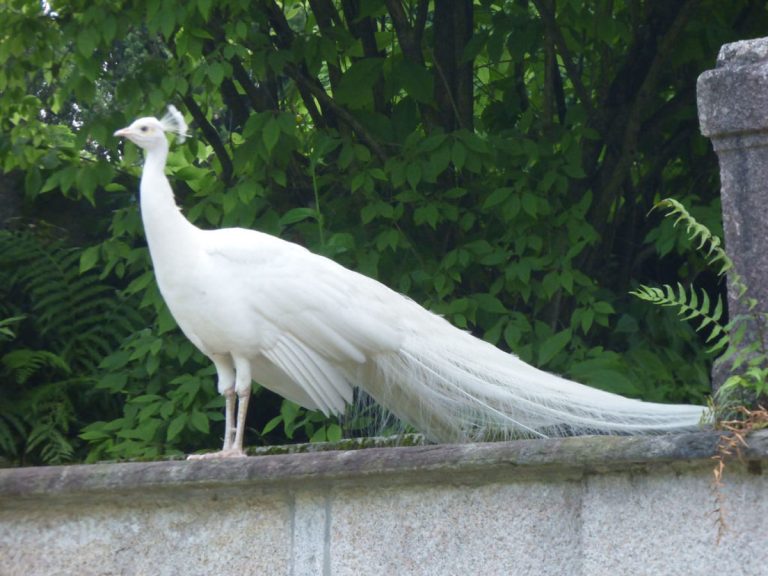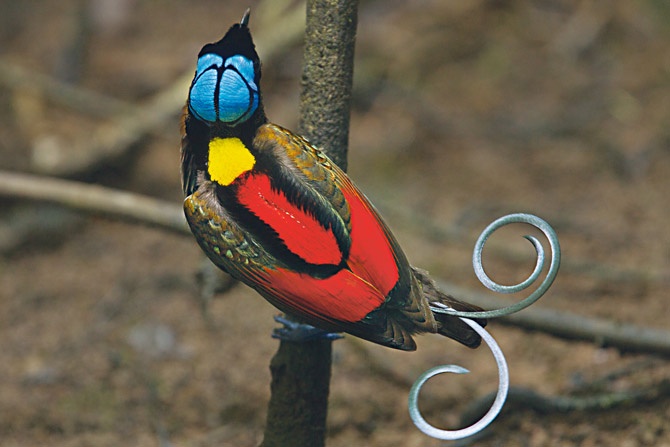Striolated Manakin – The Tiny Dancer of the Amazon
A Hidden Performer in the Canopy
Deep in the emerald world of the Amazon rainforest, where sunlight filters through layers of foliage and the air vibrates with birdsong, a small, secretive bird begins its performance. The Striolated Manakin (Machaeropterus striolatus) is barely 9–10 centimeters long, but what it lacks in size, it makes up for with artistry. Known for the males’ extraordinary courtship displays, this tiny dancer has turned survival into theater.
Subtle Beauty, Quiet Strength

Unlike the dazzling scarlet or electric-blue plumage of its relatives, the Striolated Manakin wears a modest suit: olive-green back and finely streaked underparts that catch the forest’s shifting light. This understated look serves a purpose. When not performing, it allows the bird to disappear into the shadows, safe from predators as it quietly forages for fruits and insects in the forest’s midstory. In these moments, the bird’s true strength shows — not in showiness, but in balance between elegance and practicality.
The Dance of the Leks
When breeding season arrives, subtlety gives way to spectacle. Males gather at leks, traditional display grounds where each bird clears a small patch of forest floor or claims a low perch. Here, the dance begins: rapid hops, sharp wing-snaps, brief flights, and crisp calls, all performed with clockwork precision. To the female’s eye, every movement is a test. The best dancers, those with rhythm and stamina, win her favor. In this way, the lek is not only a stage but also a proving ground — a place where beauty, skill, and survival intertwine.
An Unsung Role in the Forest

Though small, the Striolated Manakin carries an important duty. Feeding on fruits, it becomes a seed disperser, scattering the forest’s future with every meal. Each hop, each flight, each quiet pause in the understory is part of a greater cycle that keeps the rainforest alive. The bird’s subtle presence hides a truth: in the Amazon, even the smallest wings can hold up an ecosystem.
Range and Resilience
This manakin is found across much of the Amazon Basin — from Colombia and Ecuador down through Peru, Brazil, and Bolivia. It remains fairly common, yet its story is tied to the fate of its forest home. As deforestation and habitat fragmentation carve the Amazon into smaller and smaller pieces, the dance grounds shrink, and the stage for future generations begins to fade.
A Symbol of What Endures

The Striolated Manakin may never appear on national flags or seals, but it holds its own kind of symbolism. It is a reminder that survival is not always about strength or grandeur — sometimes it is about precision, persistence, and quiet resilience. To watch one dance in a shaft of rainforest light is to witness a celebration of life’s subtleties.
Closing Reflection
Like the Bald Eagle of North America, the Striolated Manakin speaks to us about freedom and endurance — only in a softer voice. Its survival depends on the health of the Amazon, one of Earth’s most vital ecosystems. Protecting the forest means protecting not only the towering trees and mighty rivers but also the tiny dancer whose wings keep the rhythm of renewal alive.






